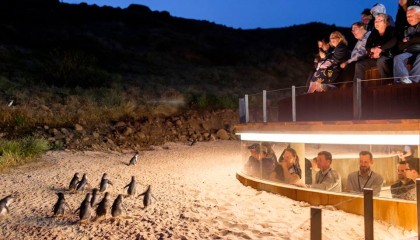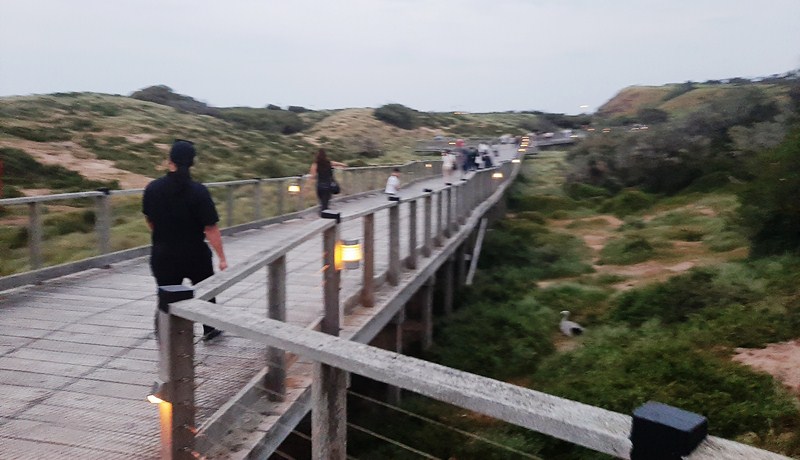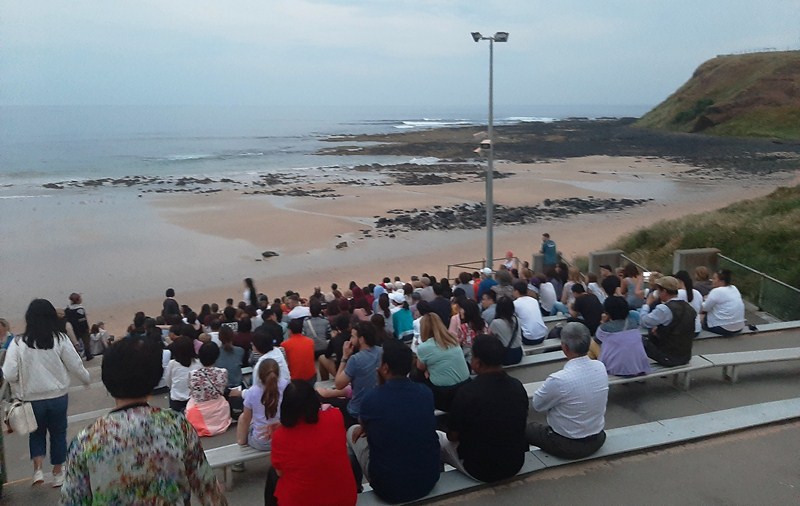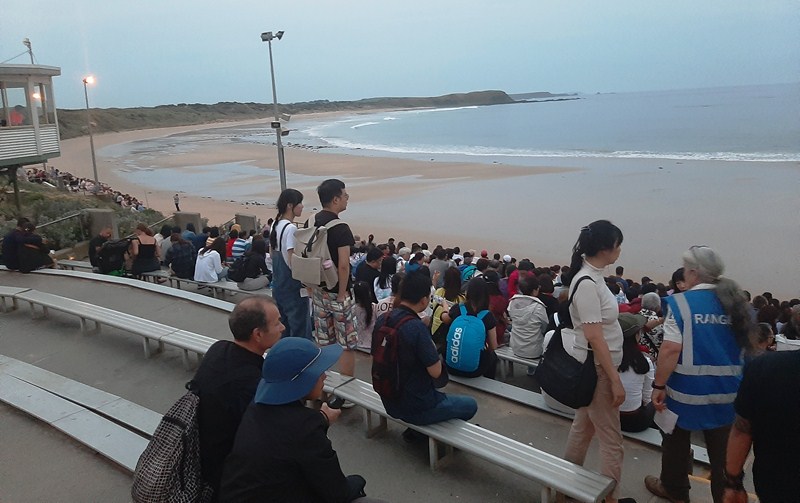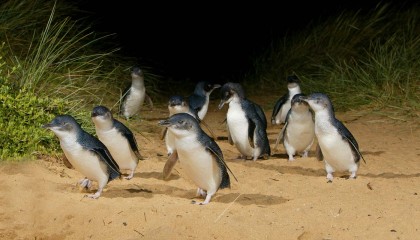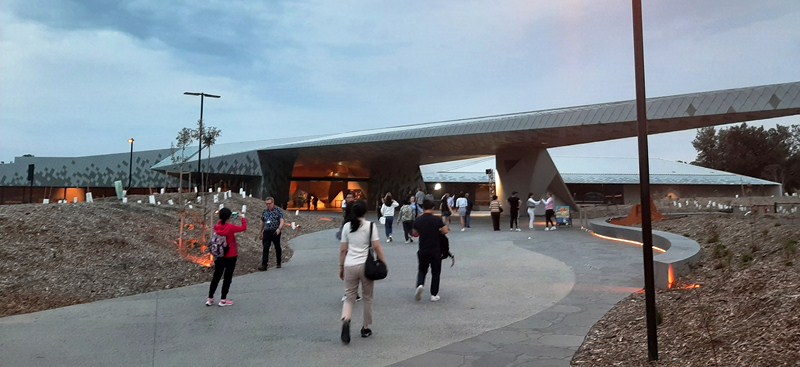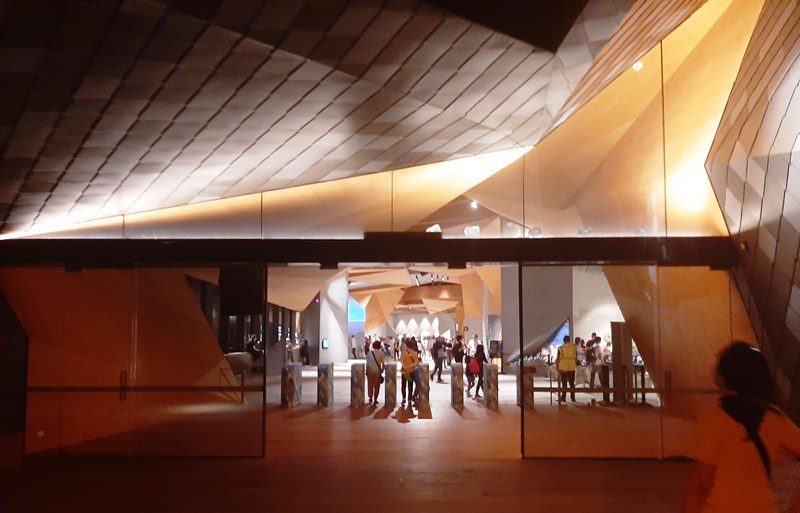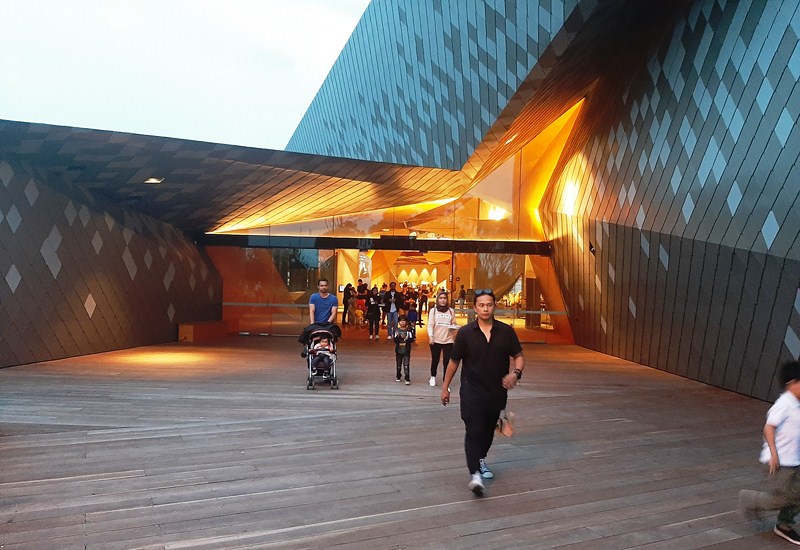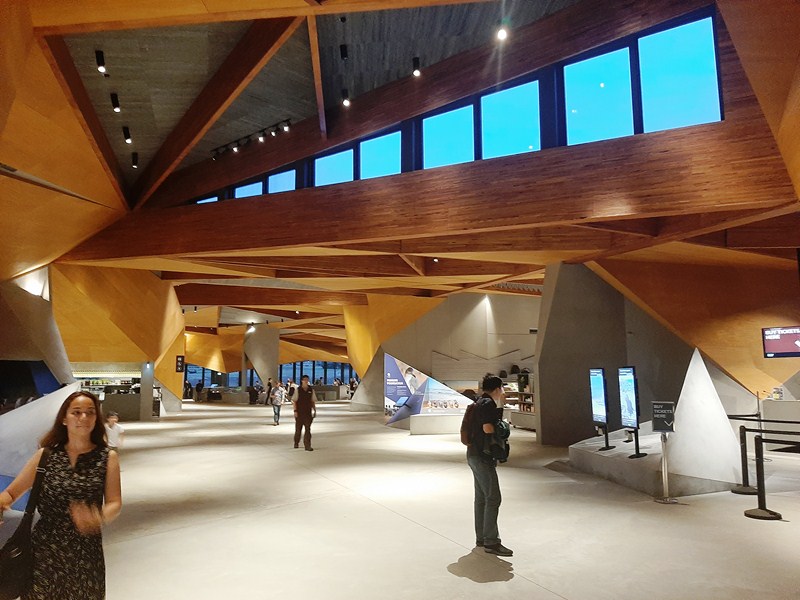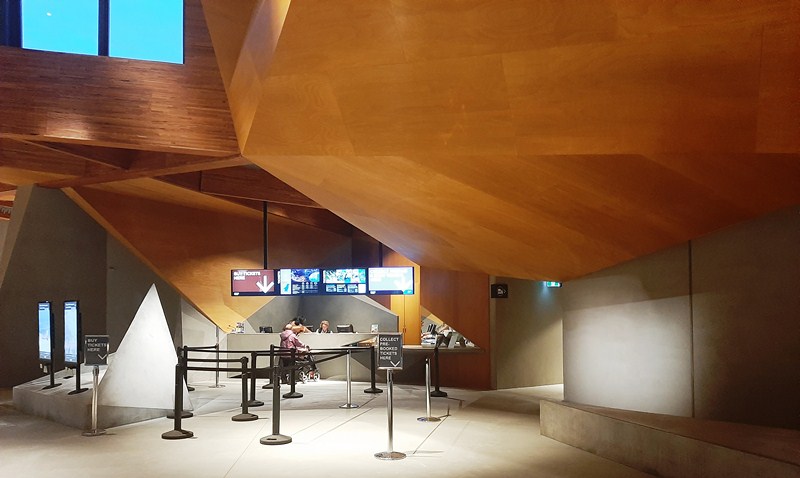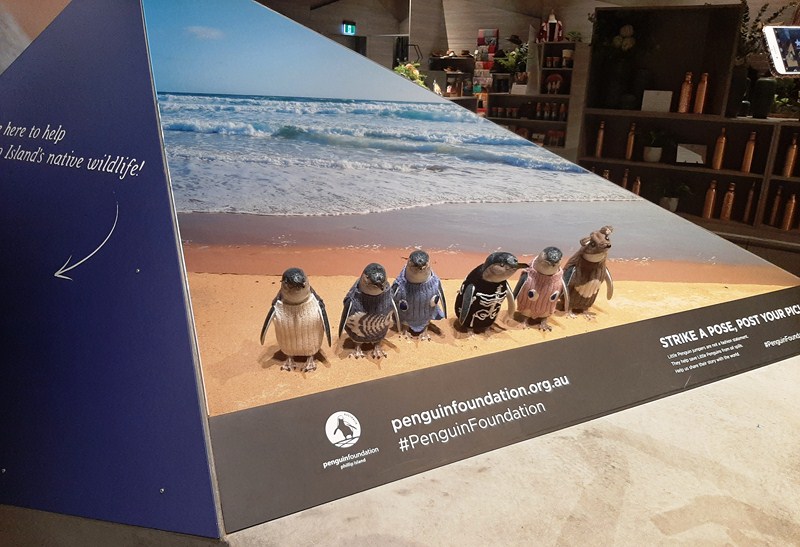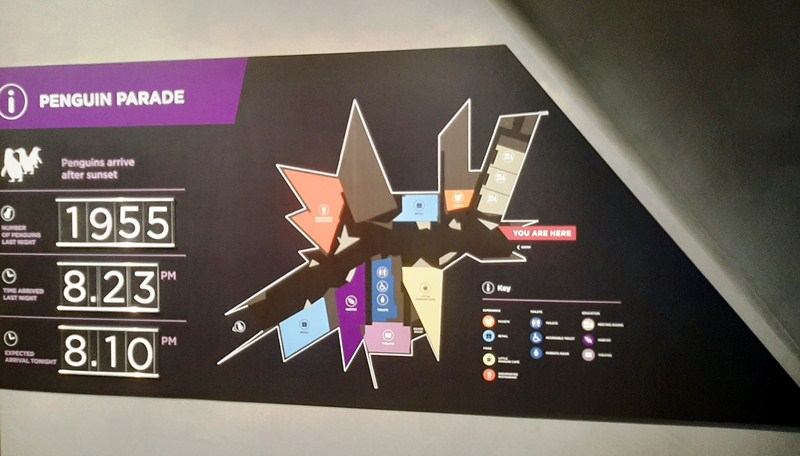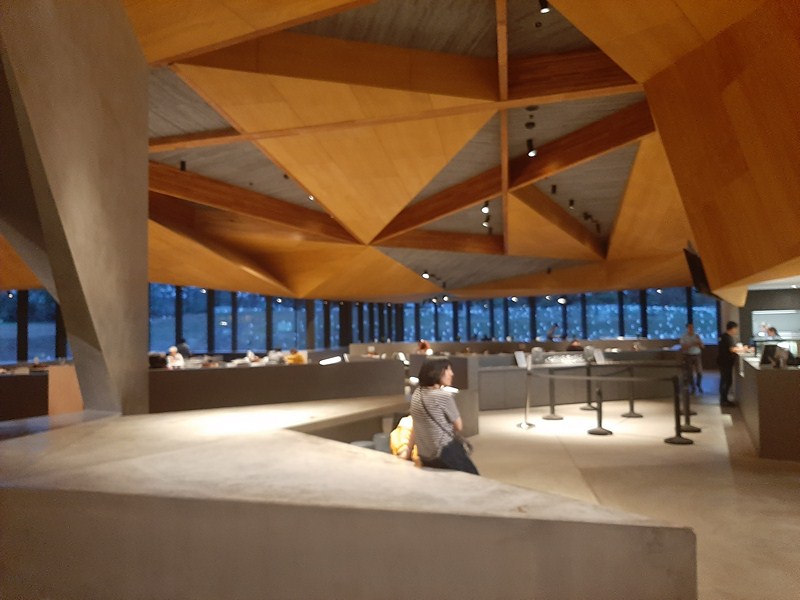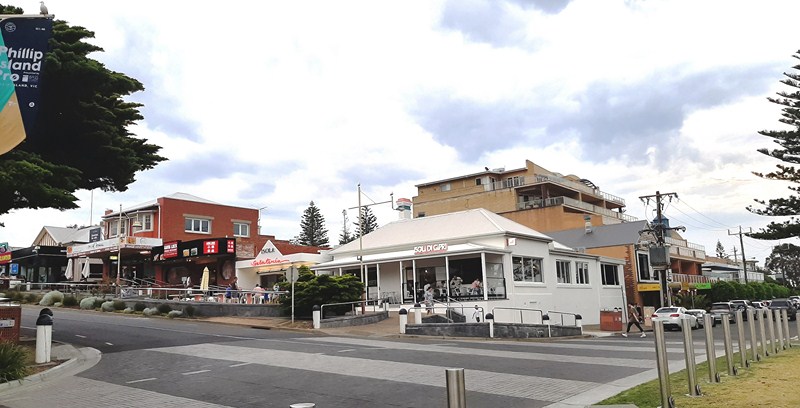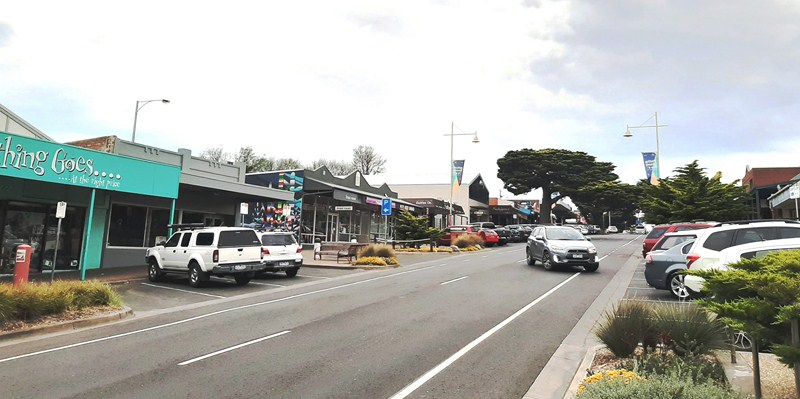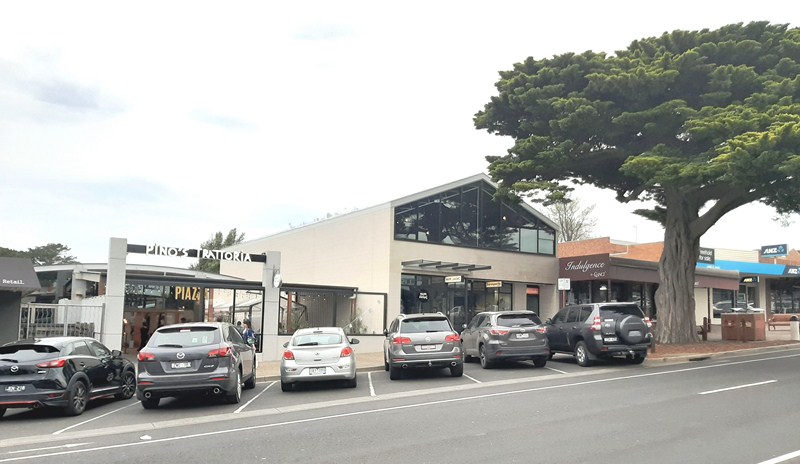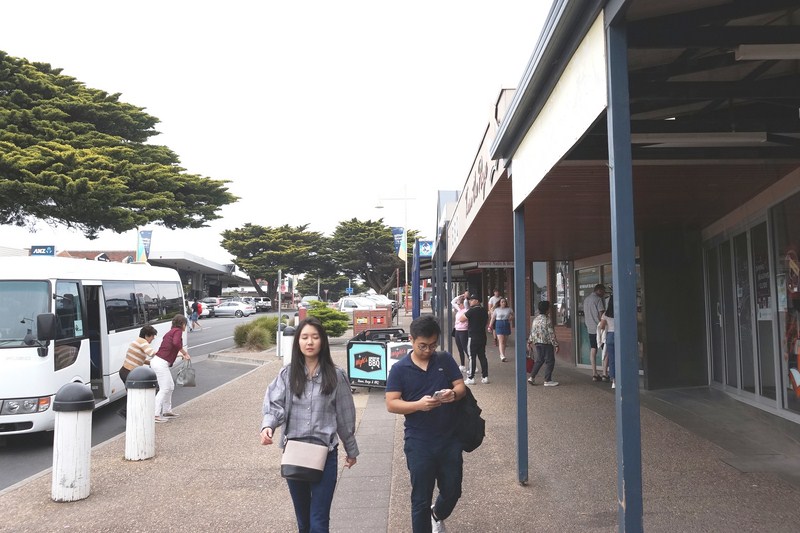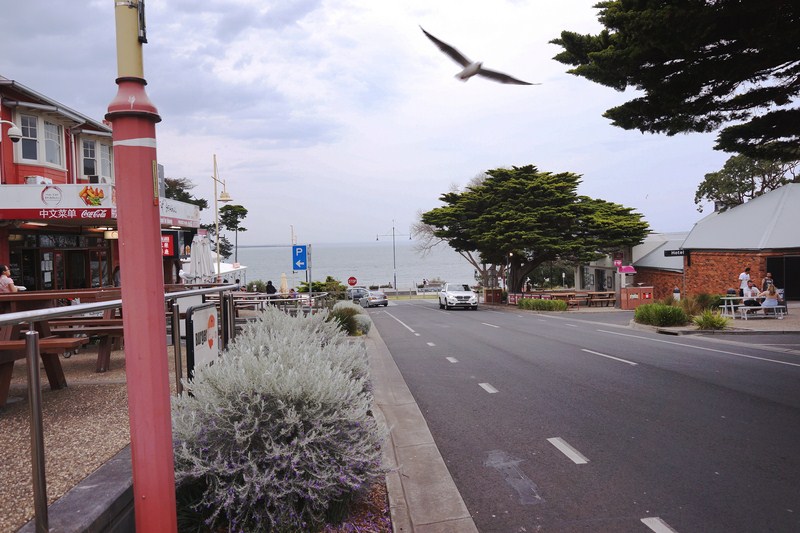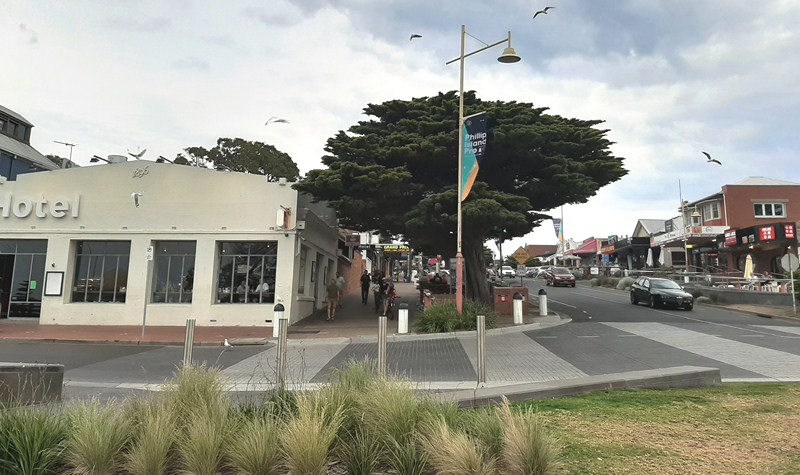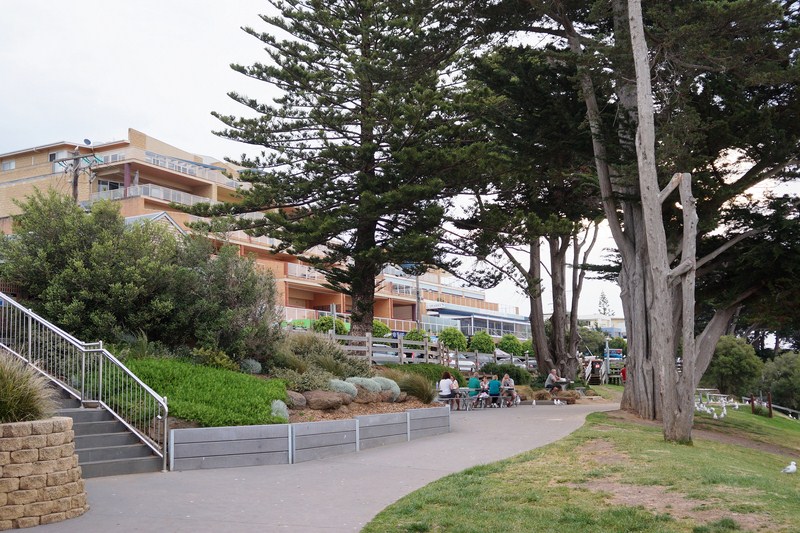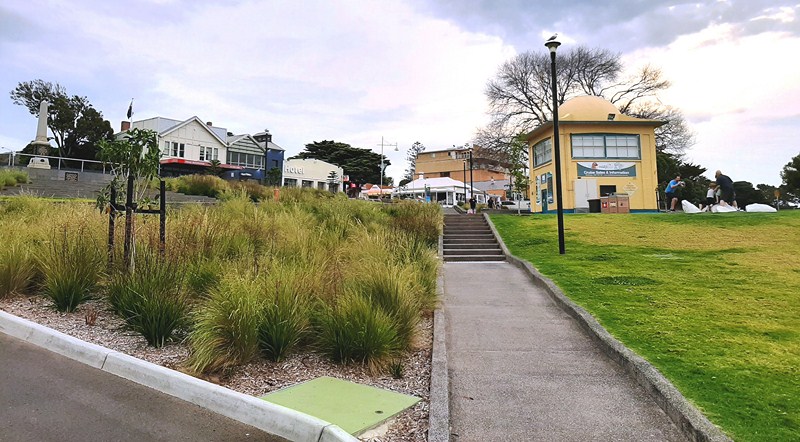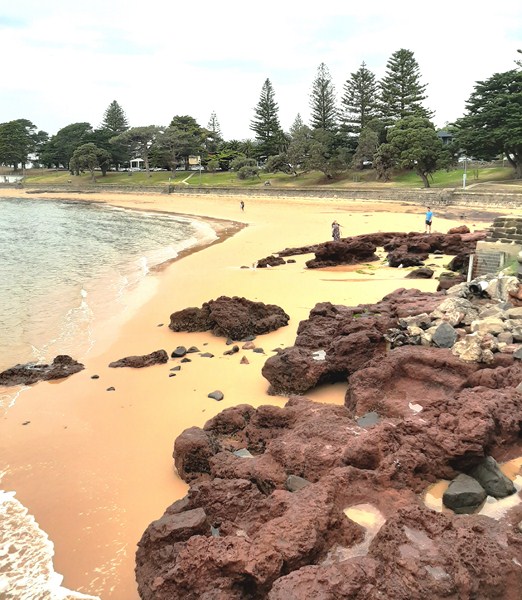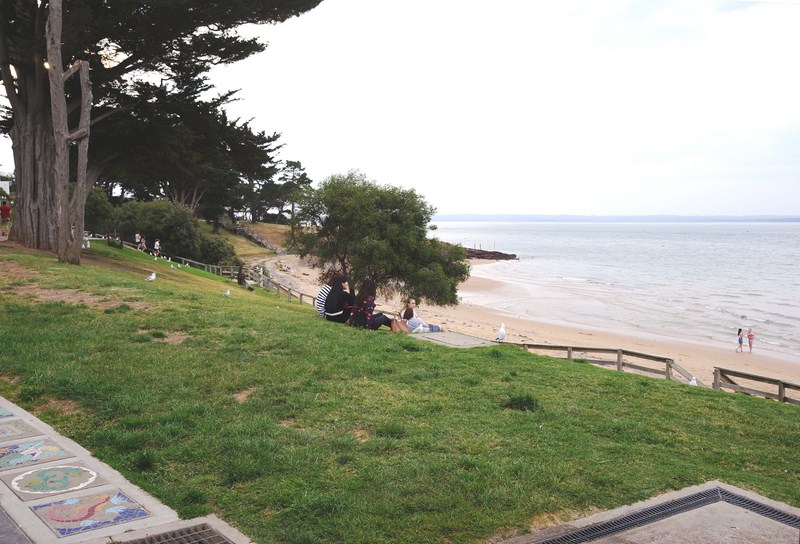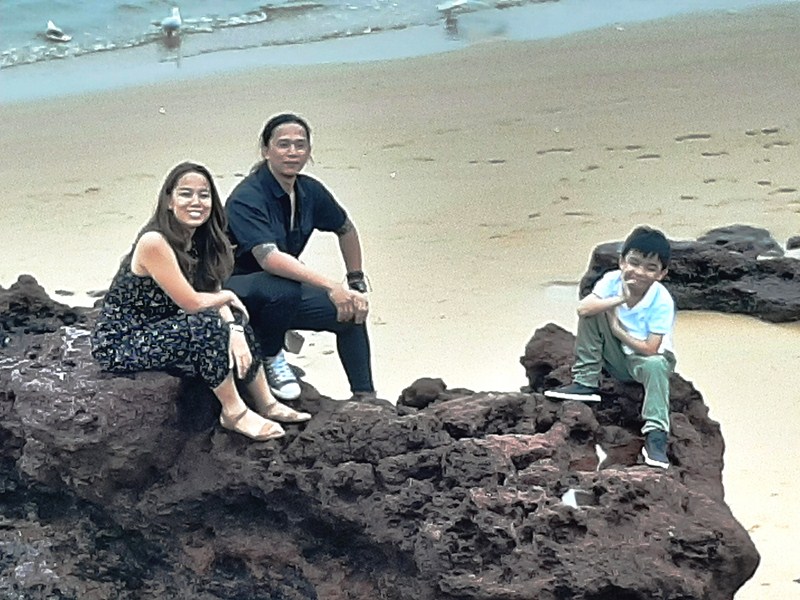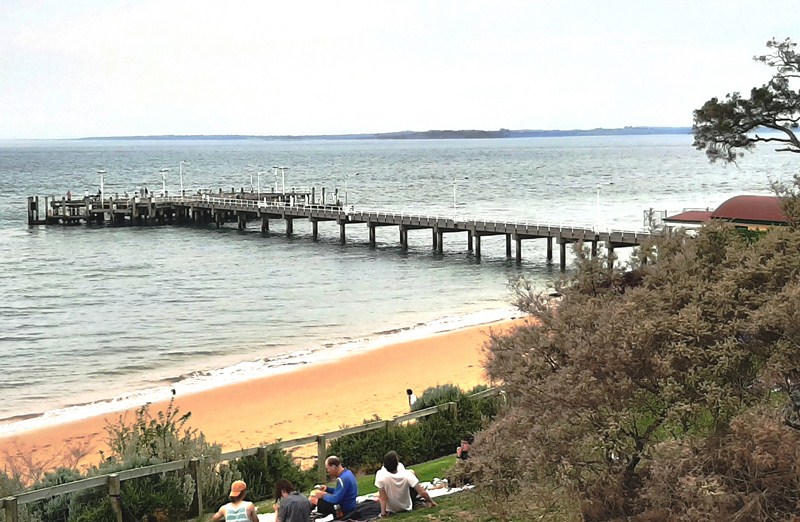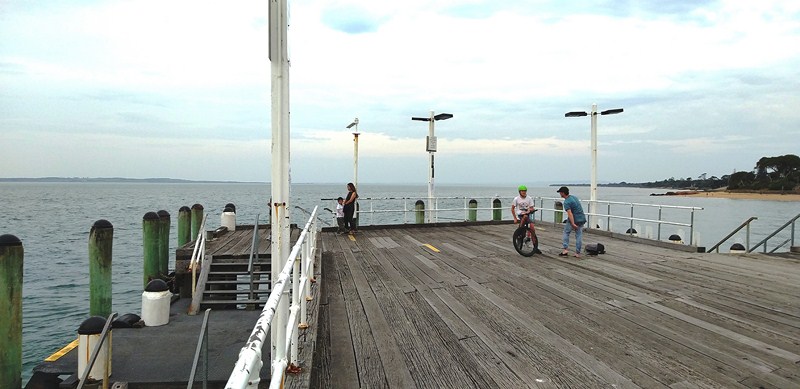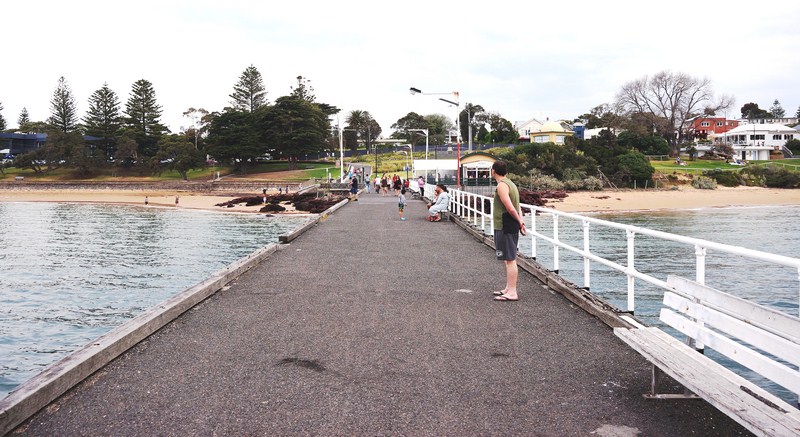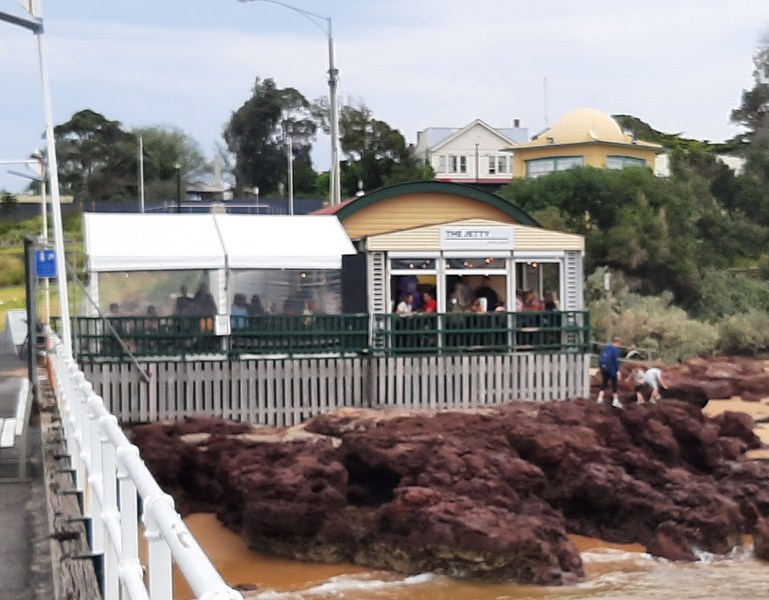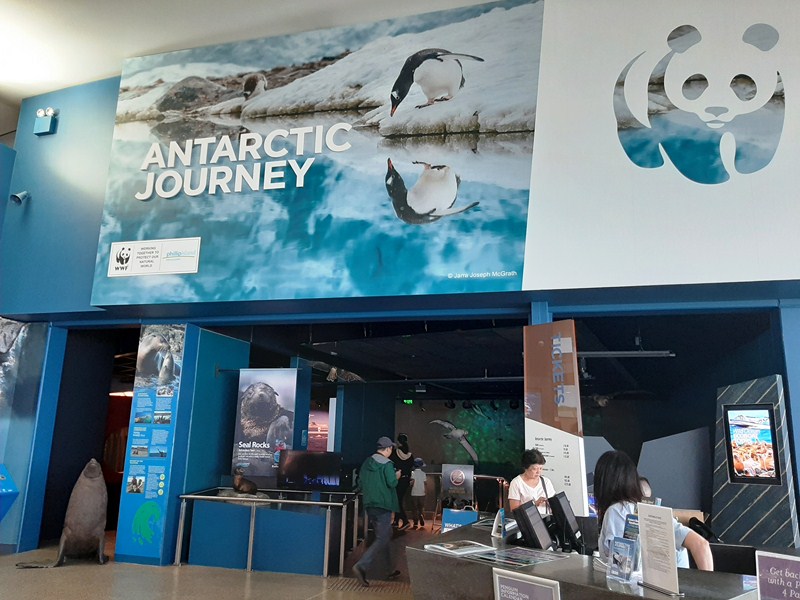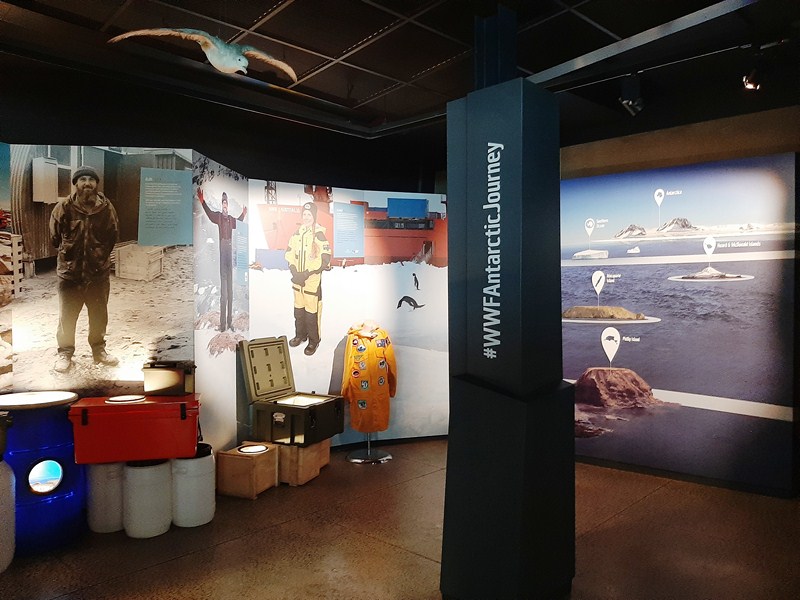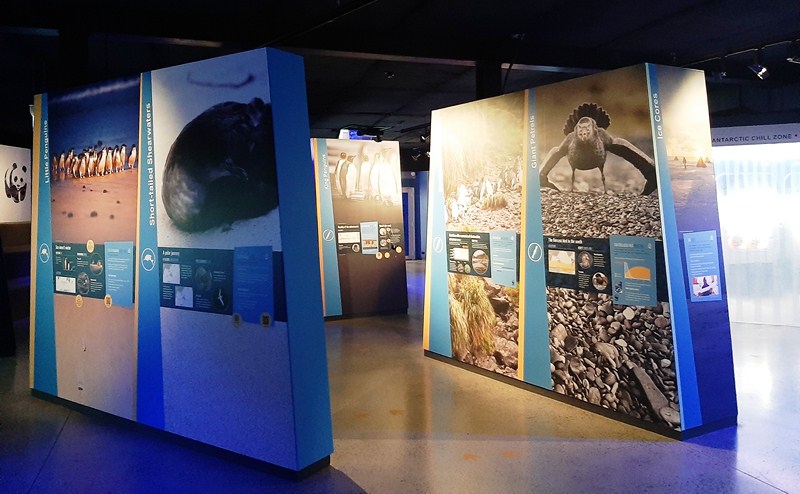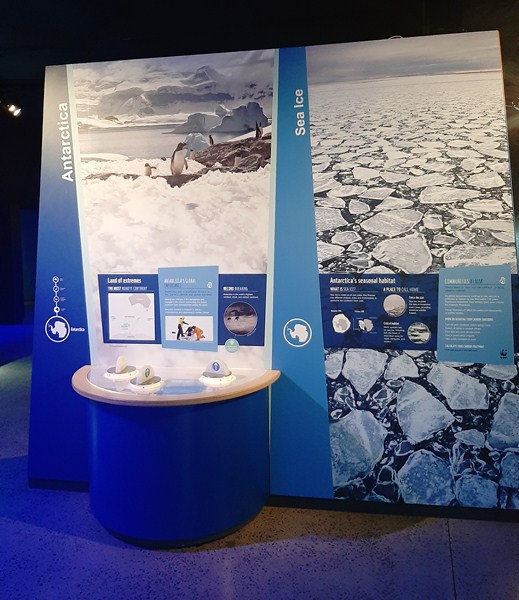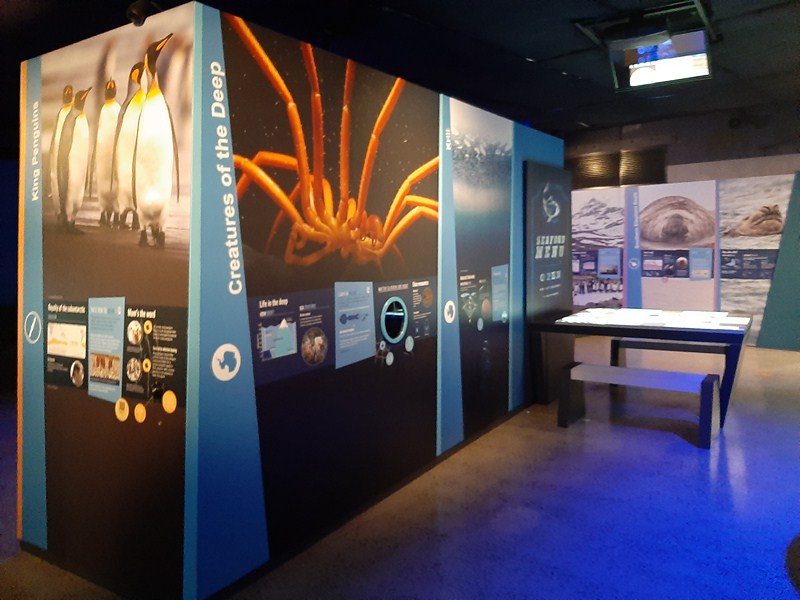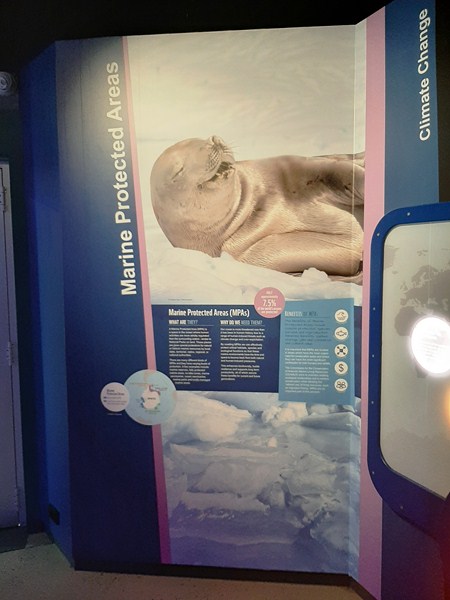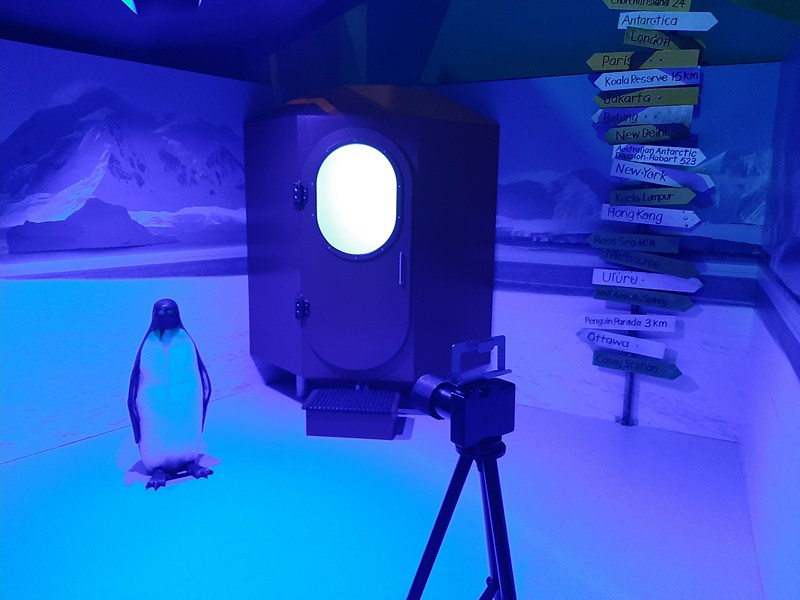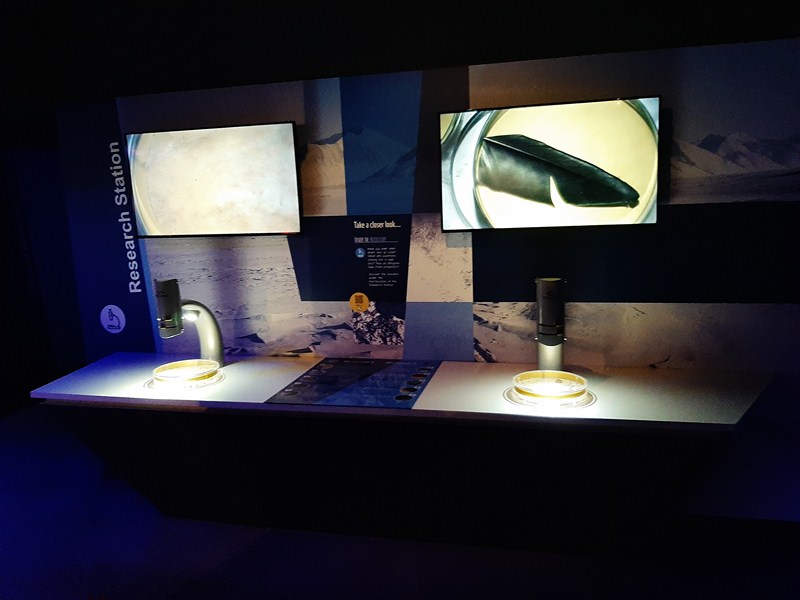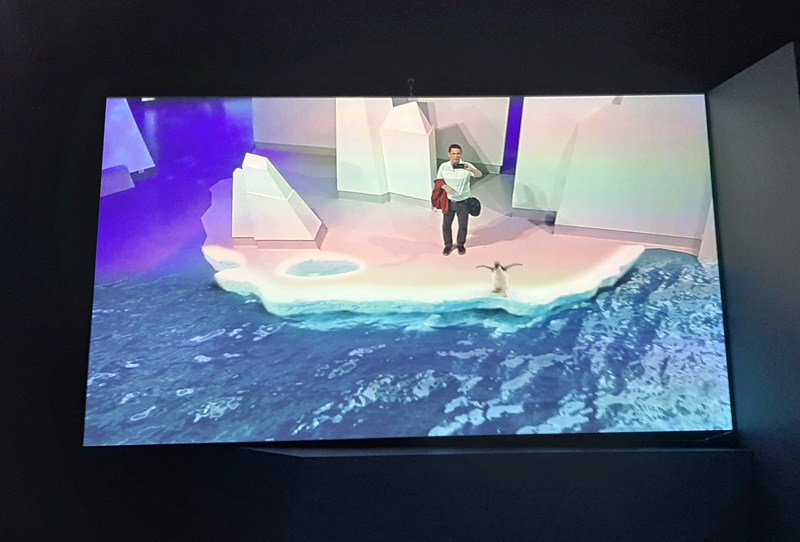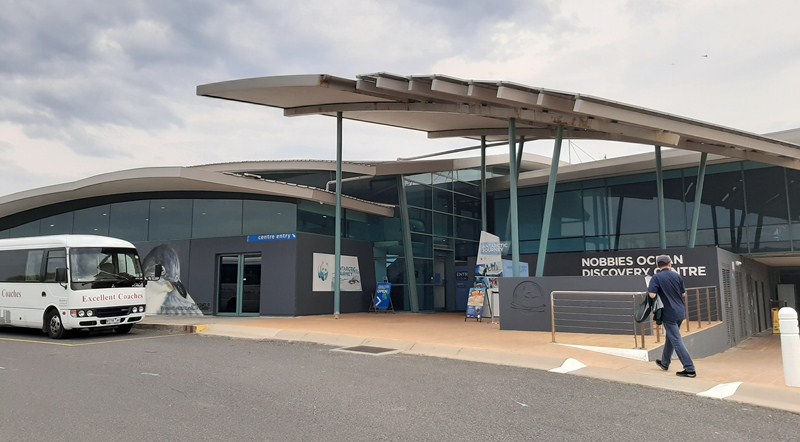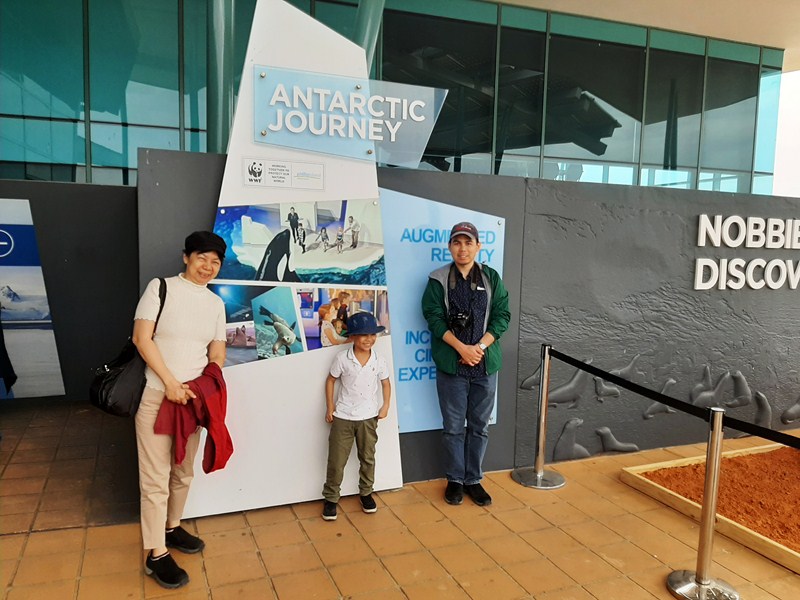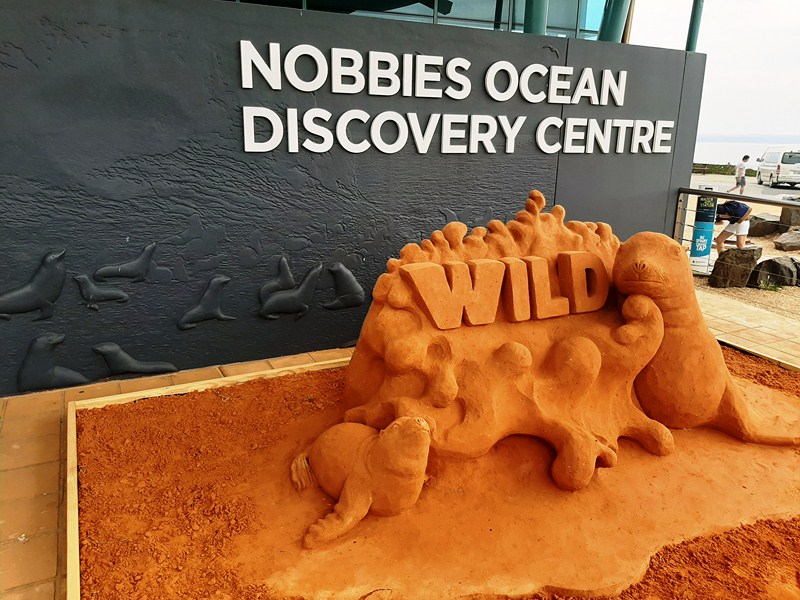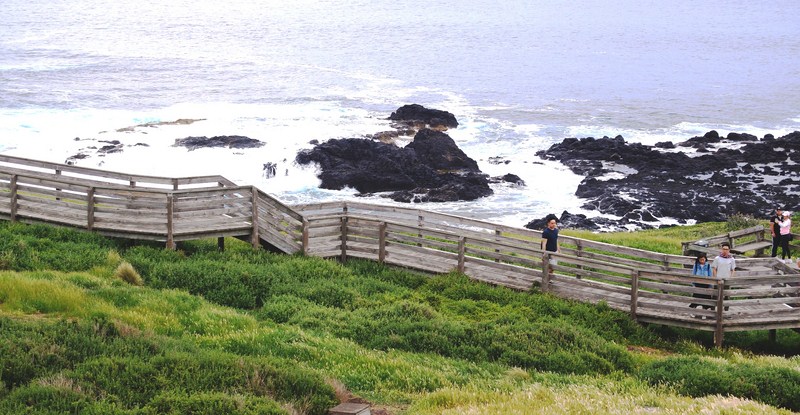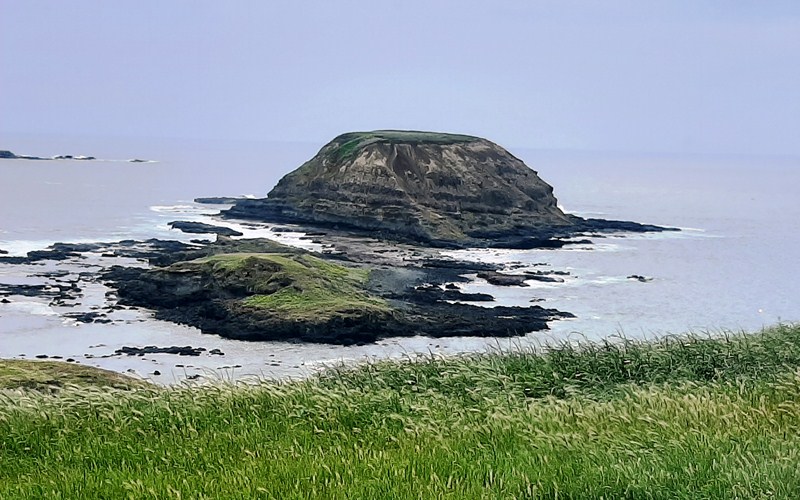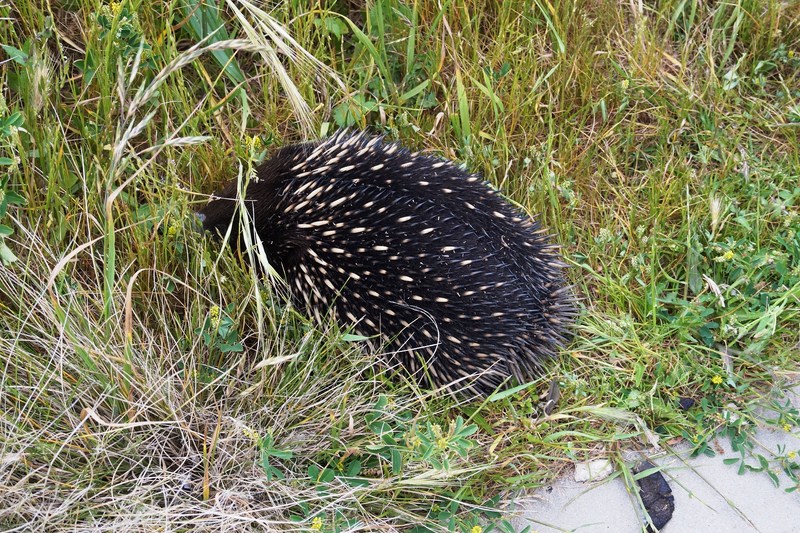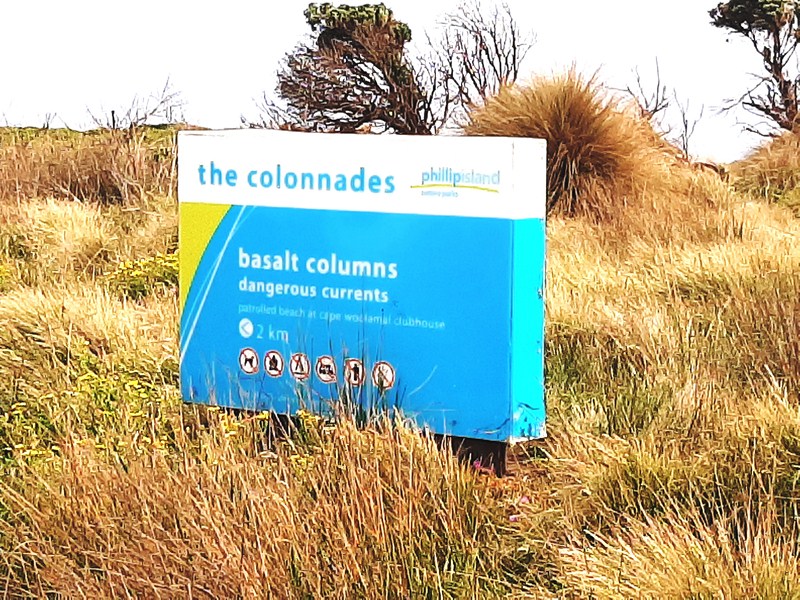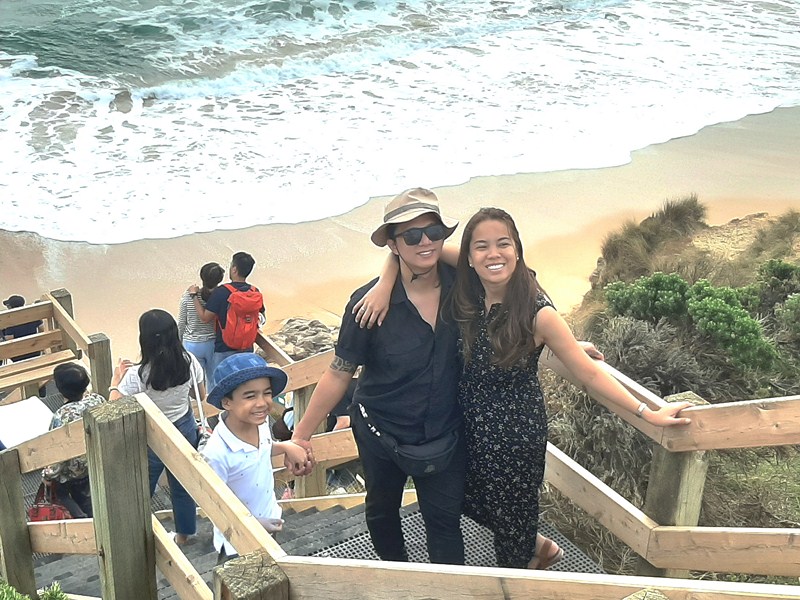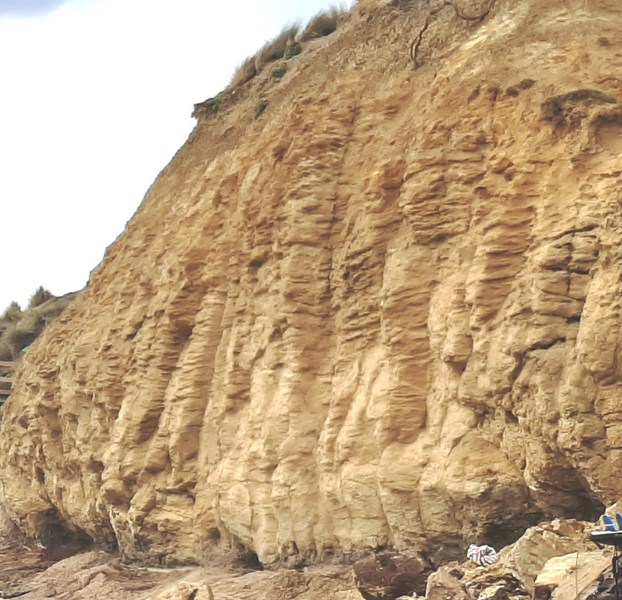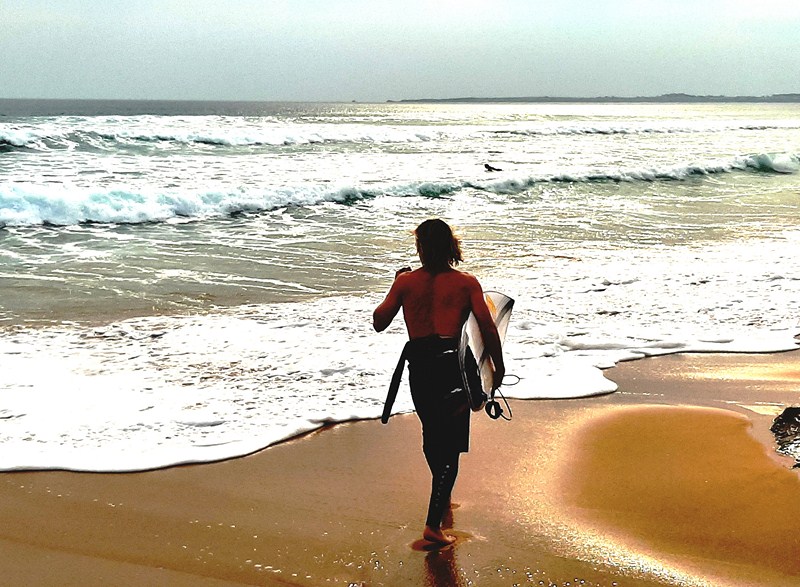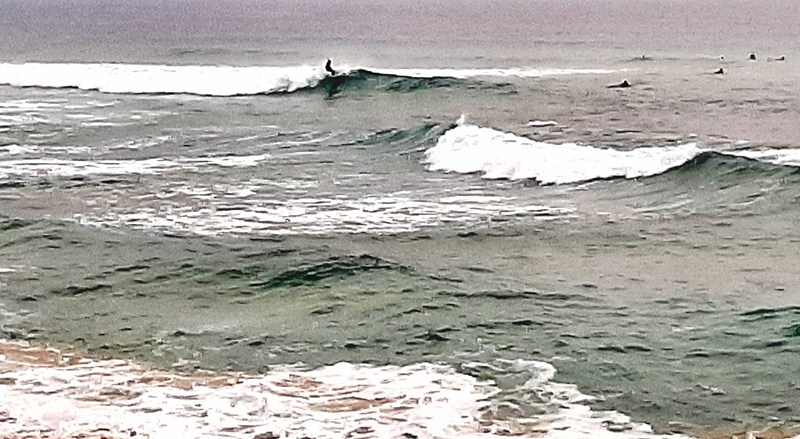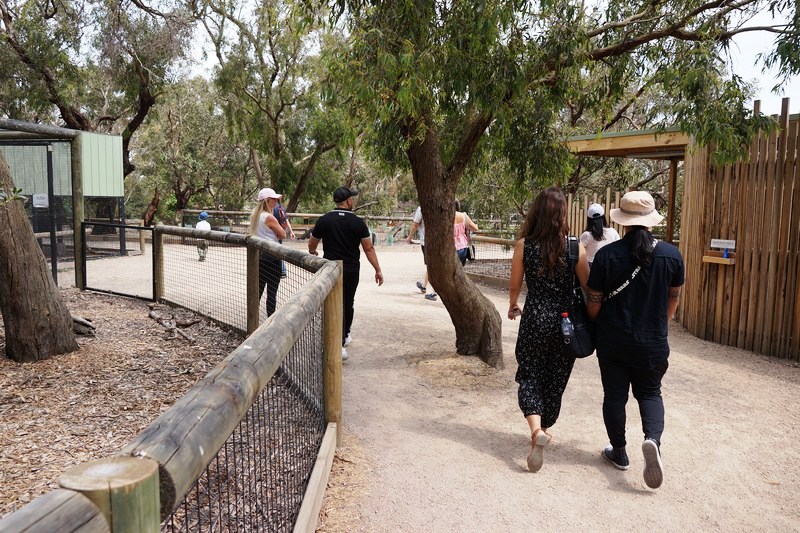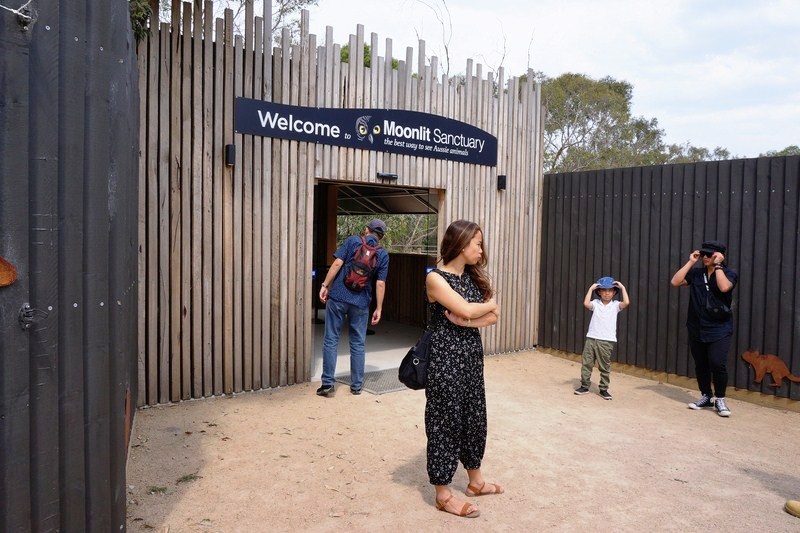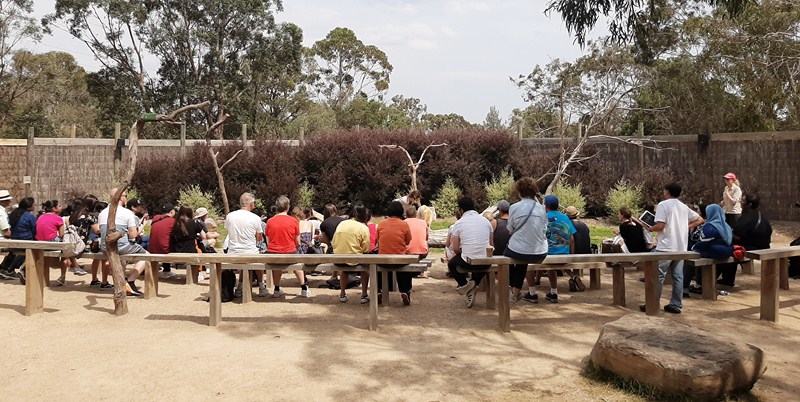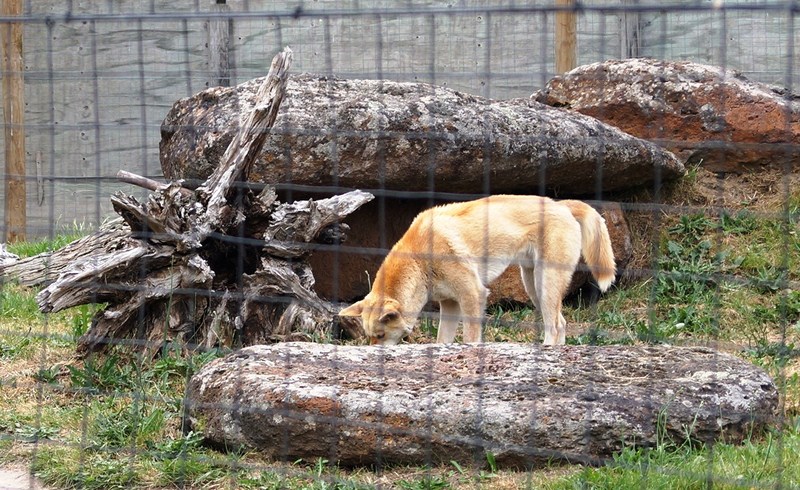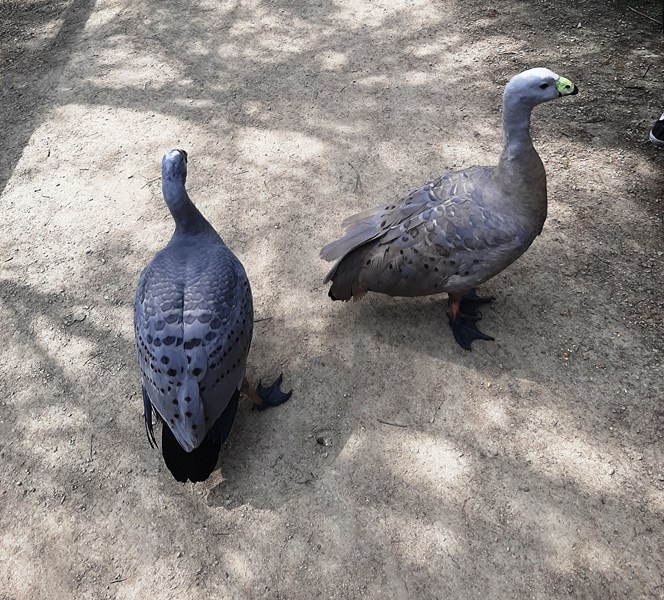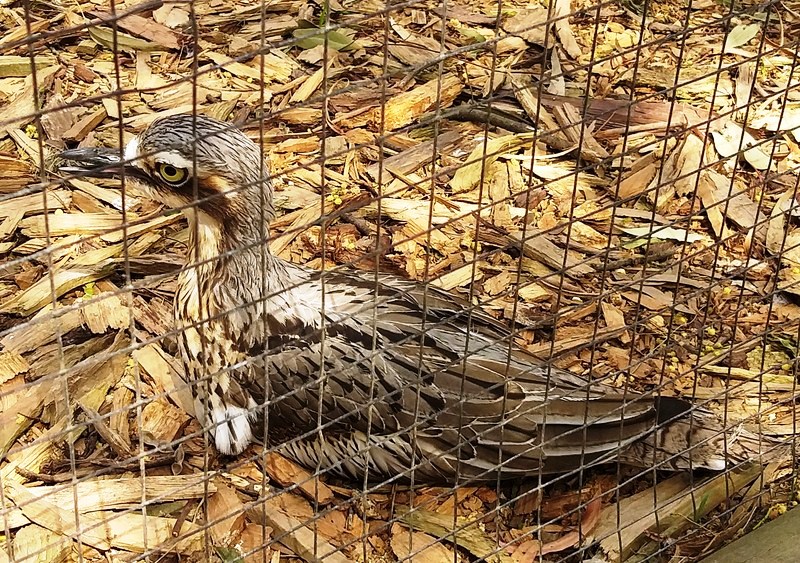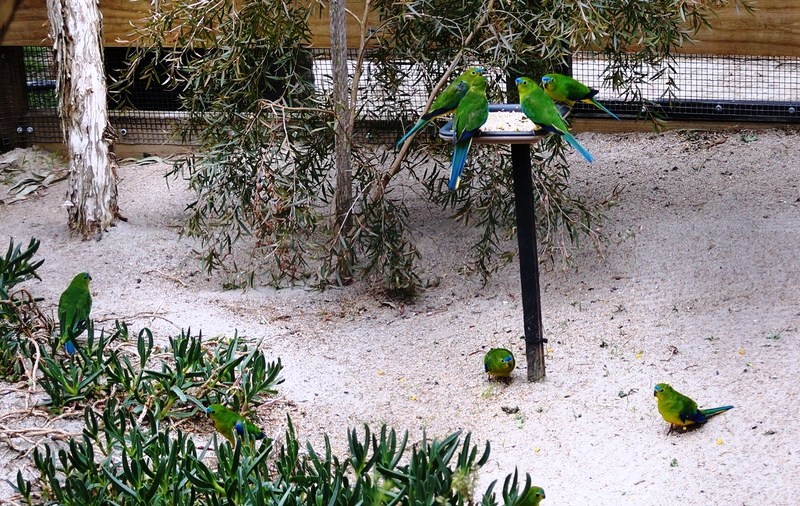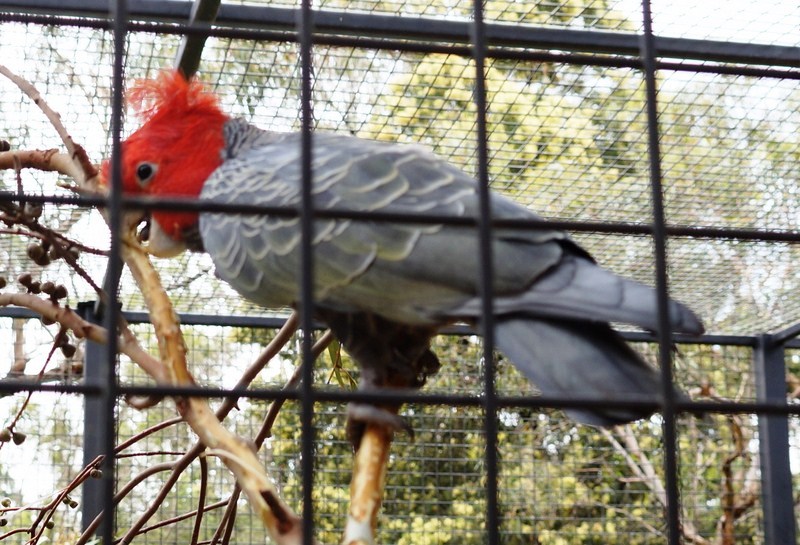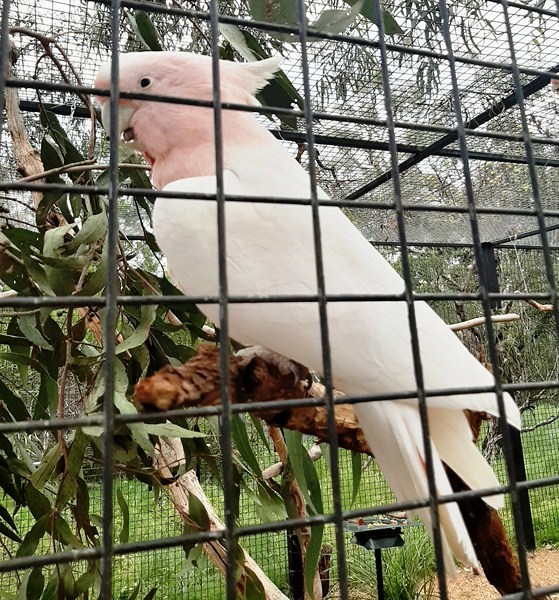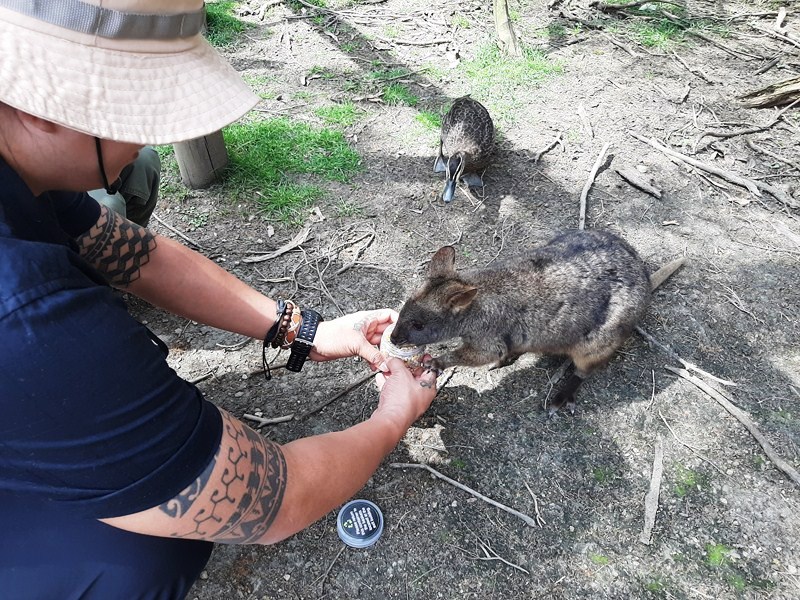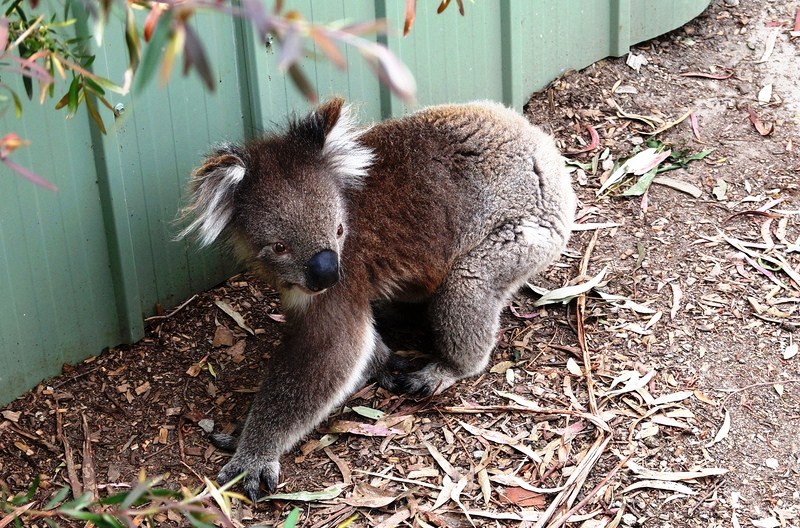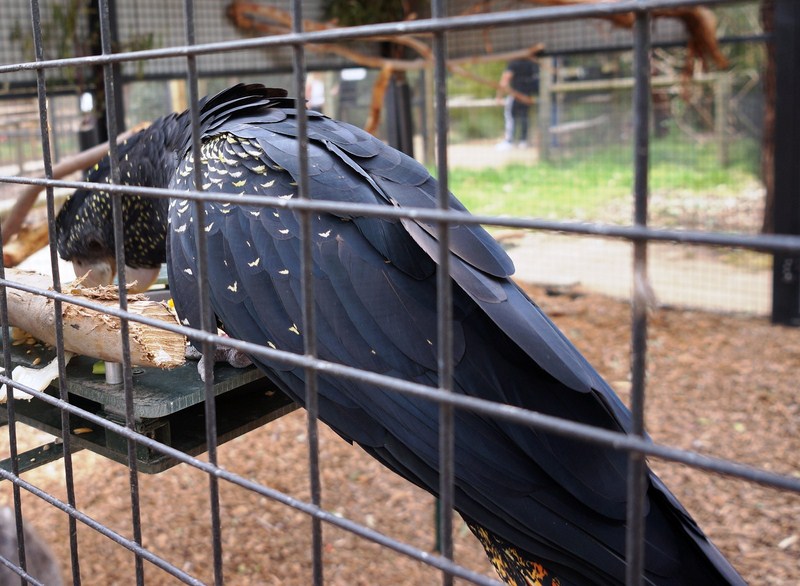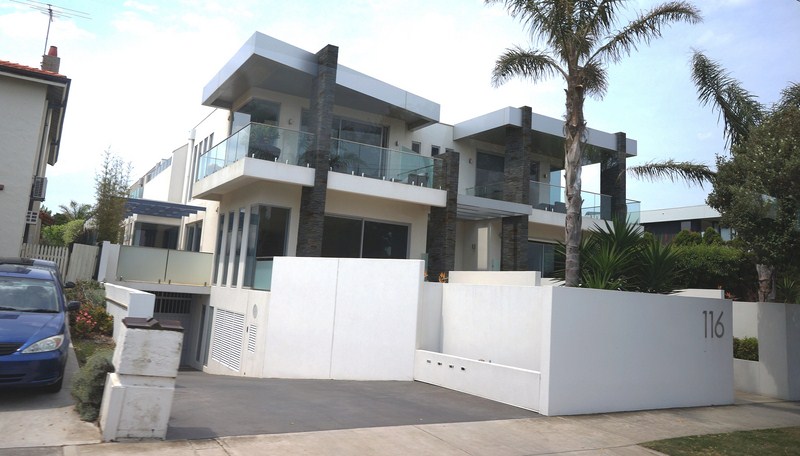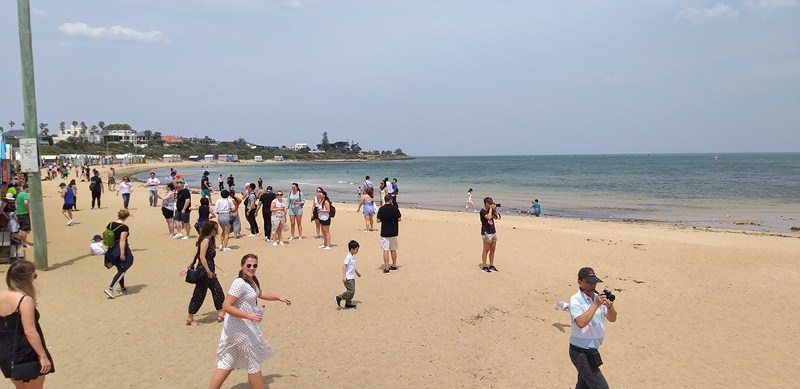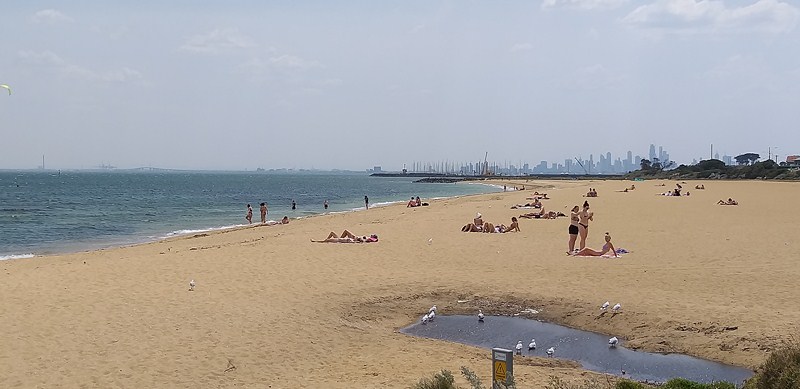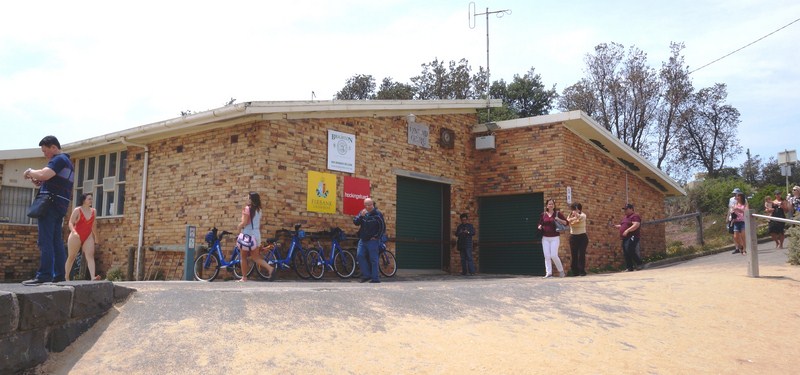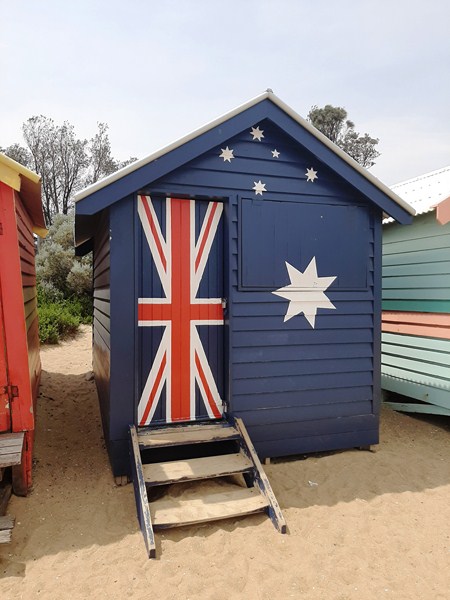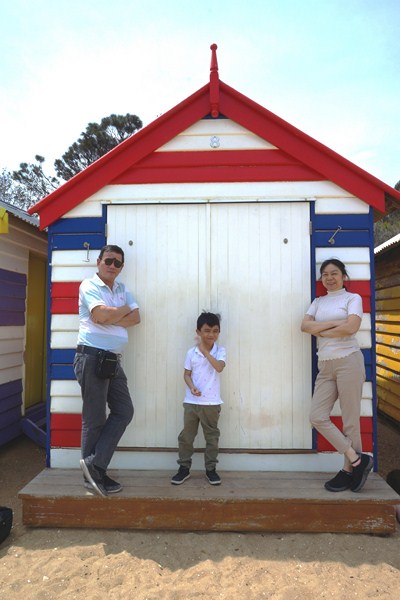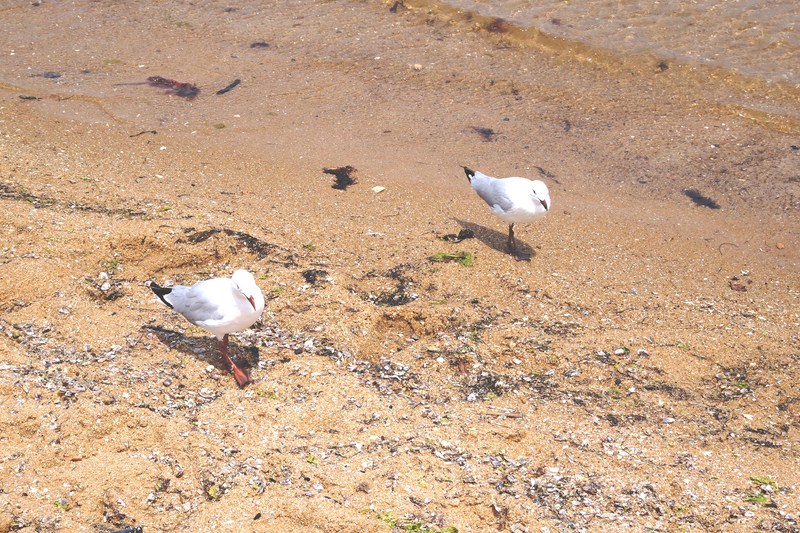The highlight of our Phillip Island tour was the iconic Penguin Parade, one of Australia’s most popular tourist attractions. Frolicking, friendly fairy penguins from Australia’s largest colony of Little Penguins (smallest species of penguins in the world) arrive at sunset every evening and the access doors of the new Penguin Parade Viewing Center to the viewing areas open approximately 1 hour prior to estimated penguin arrival time.
Check out “Penguin Parade Viewing Center”
More than six hectares of prime penguin habitat from the important Summerland Peninsula (which the penguins land on to find their burrows each evening) were restored on the site of the old visitor center building and coach parking areas, creating homes for an additional 1,400 breeding penguins.
These penguins breed in burrows, held together with native grasses and Bower spinach, usually made in the sand dunes during the winter months. Around The Nobbies and the rehabilitated areas of the Penguin Parade Visitor Centre, the penguins nest in wooden nesting boxes provided by Phillip Island Nature Parks. Egg laying (two whitish eggs are usually laid) starts in winter and can continue until December.
As soon as the access doors opened, we made our way, together with the others guests, along the viewing boardwalks, to the beach. Along the way, we passed by a number of the aforementioned wooden nesting boxes. At the end of the boardwalk, we were all made to sit down at wooden bleachers along the beach. As the bleachers were already full, we just sat down on the sand.
Photography was strictly forbidden from the stands, where we sat or anywhere else as penguins have sensitive eyes and a bright, sudden flash or unusual light can frighten or disorientate a penguin. To ensure penguins keep coming back to this special area we were asked to not use cameras, camcorders or camera phones at the Penguin Parade.
At the appointed time, the Little Penguins came out of the water and made their way, across the beach, to the sand dune burrows and the wooden nesting boxes they now call home. Since the beach was very dimly lit, we had a hard time seeing the penguins as they came out in small groups of four or five at a time. It was only when we walked back to the Visitor Center entrance that we saw the penguins clearly at the sides of the boardwalk.
Back at the center, we had dinner at the Little Penguin Café before returning to our coach for the 144.8 km., nearly 2 hour drive back to Melbourne and our hotel.
Penguin Parade: 1019 Ventnor Rd., Summerlands, Victoria 3922. Tel: +61 3 5951 2830. E-mail: info@penguins.org.au. Open daily, 10 AM (2PM on Christmas Day). Admission: $26.60 (adults), $13.20 (children, 4-15 years of age), $66.40 (family) and $18.55 (Concession).

